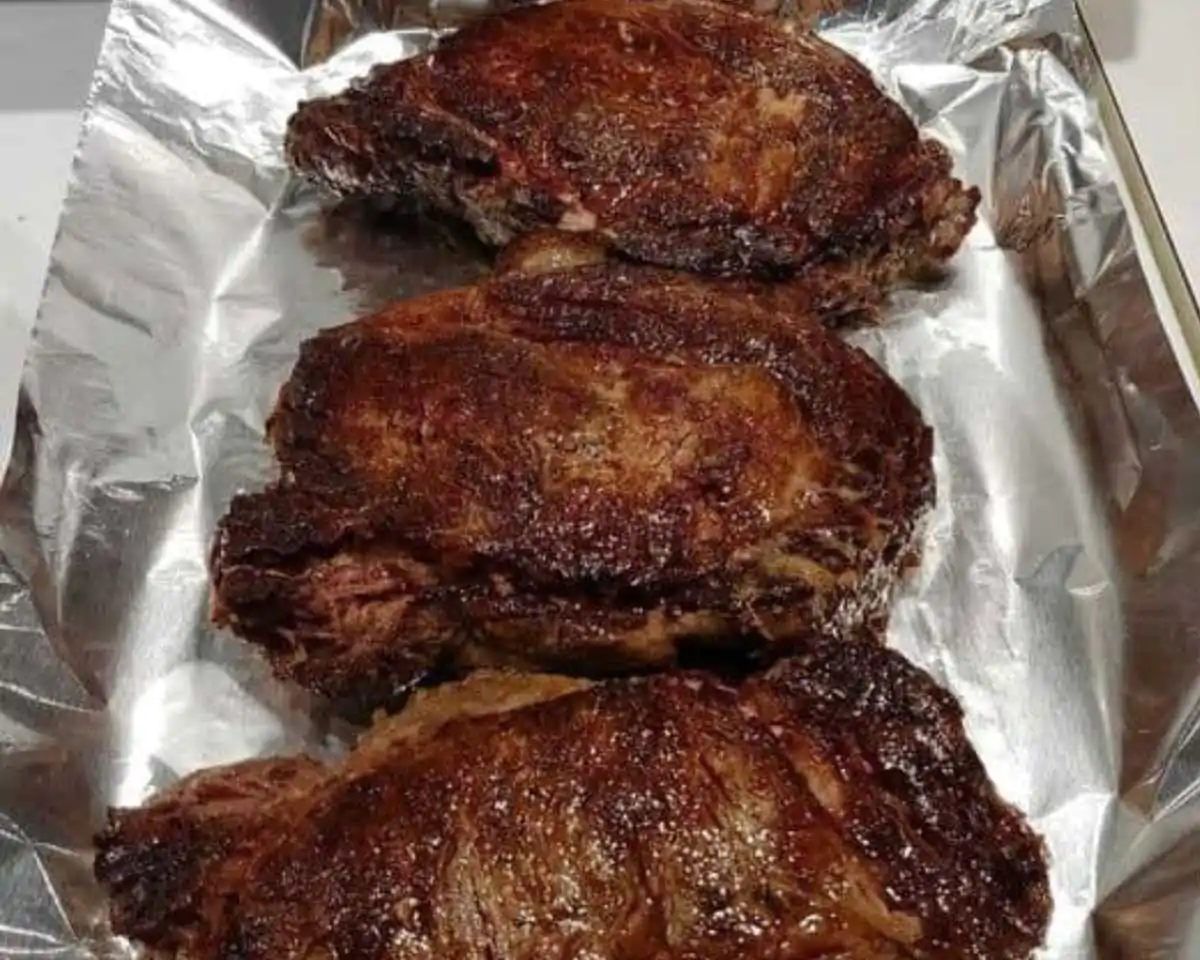In this article, we’ll explore the art of cooking a mouthwatering ribeye steak, one of the most beloved cuts of beef. Whether you’re a seasoned chef or a novice in the kitchen, we’ll guide you through the process of preparing a succulent, restaurant-quality ribeye steak in the comfort of your own home.
Introduction
The Allure of Ribeye
The ribeye steak is known for its rich marbling, which imparts exceptional flavor and tenderness. It’s a favorite among steak enthusiasts due to its juicy, well-balanced meat. Cooking the perfect ribeye is a rewarding endeavor that promises an explosion of flavor with every bite.
What You’ll Need
Essentials for Steak Perfection
Before you begin, ensure you have the following items:
- Ribeye Steak: Choose a high-quality, well-marbled ribeye from your local butcher or grocer.
- Salt and Pepper: These simple seasonings are key to enhancing the steak’s flavor.
- Olive Oil: For searing and flavor enhancement.
- A Cast Iron Skillet: Ideal for achieving that perfect sear.
- Thermometer: To monitor the steak’s internal temperature.
- Tongs: For flipping and handling the steak.
- Butter and Fresh Herbs: Optional for a finishing touch.
Preparing Your Steak
The First Steps to Success
- Season Liberally: Remove the steak from the refrigerator and allow it to come to room temperature. Season both sides generously with salt and pepper.
- Preheat the Skillet: Place your cast iron skillet on high heat and let it get smoking hot. Add a touch of olive oil.
- Searing the Steak: Carefully lay the ribeye in the skillet. Sear it for 2-3 minutes on each side, ensuring a beautiful crust forms.
Achieving the Perfect Doneness
Cooking to Your Preference
Use a meat thermometer to gauge the steak’s internal temperature:
- Rare: 120-125°F (49-52°C)
- Medium Rare: 130-135°F (54-57°C)
- Medium: 140-145°F (60-63°C)
- Medium Well: 150-155°F (65-68°C)
- Well Done: 160°F (71°C) and above
Resting and Serving
The Final Touch
Allow your ribeye to rest for 5-10 minutes after cooking. This redistributes the juices, ensuring a juicy, tender steak. For an extra touch of flavor, add a pat of butter and some fresh herbs while it rests.
Pairing and Sides
The Perfect Complements
Pair your ribeye with classic sides like garlic mashed potatoes, sautéed vegetables, or a crisp garden salad. Red wine or a craft beer can be great choices to complement the steak’s bold flavor.
Conclusion
Savoring Perfection
In conclusion, cooking the perfect ribeye steak is a rewarding culinary experience that anyone can master with a bit of practice. Remember to choose a high-quality ribeye, season it generously, and achieve your preferred level of doneness for an unforgettable dining experience.
So, whether you’re preparing a special meal or simply craving a delectable steak, you now have the knowledge to create a restaurant-worthy ribeye in the comfort of your own kitchen.
Frequently Asked Questions
Addressing Your Steak Queries
1. Can I marinate the ribeye steak before cooking?
While marinating can add flavor, it’s not necessary for a ribeye steak. The natural marbling already provides rich flavor.
2. How long should I let the ribeye rest after cooking?
Allow the steak to rest for 5-10 minutes, which allows the juices to redistribute for maximum tenderness.
3. Should I trim the excess fat from the ribeye?
It’s a matter of personal preference. Some like to trim excess fat for a leaner cut, while others prefer to leave it for added flavor.
4. What are some good seasoning options besides salt and pepper?
You can experiment with various seasonings like garlic powder, onion powder, or a steak rub for added flavor.
5. Is it possible to cook a ribeye steak on a grill?
Absolutely! Grilling a ribeye is another fantastic way to enjoy this cut. Follow similar temperature guidelines and flip the steak as needed for your desired level of doneness.


Leave a Reply